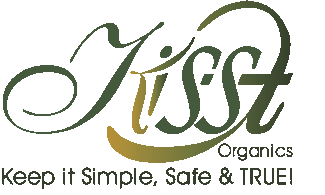 It’s
pretty common knowledge that calcium is an important mineral for bone
growth and mineralization. We also need calcium to support nerve
function, for healthy muscles, and to clot blood.
It’s
pretty common knowledge that calcium is an important mineral for bone
growth and mineralization. We also need calcium to support nerve
function, for healthy muscles, and to clot blood.
But when it comes to the best sources, the amount of calcium we need,
and things we do that decrease calcium absorption, we are often left in
the dark.
Or worse – lied to.
Here is a chart showing the amounts of calcium in some foods:
As you can see sesame seeds are the best source of calcium and leafy greens are high on the list of calcium-rich foods. Dark leafy greens in raw form acutally top the list weighing in higher than sesame seeds.
Wrong.
Here are the Recommended Dietary Allowances for calcium as developed by the Food and Nutrition Board at the Institute of Medicine of the National Academies:
The calcium food chart I posted under Lie #1 shows milk as having 296 mg calcium. As we can see by the RDA’s here, that is only enough if you are 12 months or younger.
If you are a celebrity with a milk mustache you need more than three
times as much as one glass of milk gives (some of them four or five
times).
These four things can decrease or inhibit calcium absorption:
Why?
Our bodies can only absorb 500 mg’s of calcium at a time. So the other 500 mg’s is going right through you, unabsorbed. It’s simply not effective. To be effective you have to take 500 mg doses several times a day. Oh, and don’t forget to take your calcium with magnesium and Vitamin D!
source
nourishing treasures
Or worse – lied to.
Lie #1: Milk is the best source of calcium
Calcium must be acquired through food, as it is not something the body can make on its own. Although milk has been marketed to be full of calcium and good for bones, dark greens have nearly as much calcium, and sesame seeds are at the top of the list.Here is a chart showing the amounts of calcium in some foods:
| Food | Serving | mg Calcium |
| Sesame seeds | 1/4 cup | 350 mg |
| Goat’s milk | 1 cup | 325 mg |
| Cow’s milk | 1 cup | 296 mg |
| Spinach (boiled) | 1 cup | 245 mg |
| Collard Greens (boiled) | 1 cup | 226 mg |
| Turnip Greens (boiled) | 1 cup | 197 mg |
| Blackstrap Molasses | 2 tsp | 118 mg |
| Kale (boiled) | 1 cup | 93 mg |
| Broccoli (steamed) | 1 cup | 75 mg |
| Green beans (boiled) | 1 cup | 58 mg |
| Basil, ground | 2 tsp | 63 mg |
| Cinnamon, ground | 2 tsp | 55 mg |
| Orange | 1 | 52 mg |
| Garlic | 1 oz | 51 mg |
Lie #2: Oranges are a great dairy-free source of calcium
Did you read that food list? I know you did. Oranges are near the bottom of the list. Yes, they are up there, but did you notice ground cinnamon has more calcium than an orange? Marketing, people, it’s all in the marketing. Florida oranges are big business.Lie #3: One glass of milk is all the calcium you need for the day
We see the “Got Milk?” headlines which insinuate as long as we drink one glass of milk a day, we’re set.Wrong.
Here are the Recommended Dietary Allowances for calcium as developed by the Food and Nutrition Board at the Institute of Medicine of the National Academies:
| Ages | RDA Calcium |
| Children 12 months and younger | 200 – 250 mg |
| Children 1 – 8 years | 700 -1,000 mg |
| Children 9 – 18 years | 1,200 – 1,400 mg |
| Adults 19 – 50 years | 1,000 mg |
| Adults 51+ years | 1,200 mg |
| Pregnant, Lactating, and Postmenopausal Women | 1,500 mg |
Lie #4: Nothing you consume can effect calcium absorption
Food is poo-pooed by health professionals as having very little effect on health. And the fact that foods can effect calcium absorption is not common knowledge.These four things can decrease or inhibit calcium absorption:
- Drinking Caffeine – teas, coffee, many carbonated beverages
- Eating White Sugar
- Consuming Phosphates – commonly found in carbonated beverages
- Eating a High Protein Diet
Lie #5: Taking large doses of calcium is effective
1,000 mg calcium supplements are not uncommon. They are less expensive than the lower doses, of course, and this is where they suck you in. You want to save money, so you purchase the 1,000 mg instead of the 500 mg not knowing you’re wasting your money anyways.Why?
Our bodies can only absorb 500 mg’s of calcium at a time. So the other 500 mg’s is going right through you, unabsorbed. It’s simply not effective. To be effective you have to take 500 mg doses several times a day. Oh, and don’t forget to take your calcium with magnesium and Vitamin D!
source
nourishing treasures

No comments:
Post a Comment